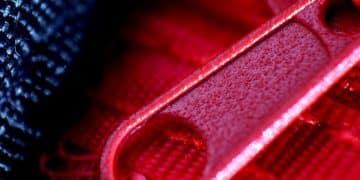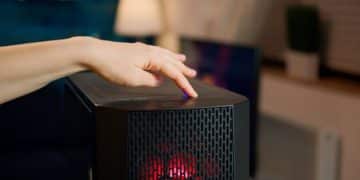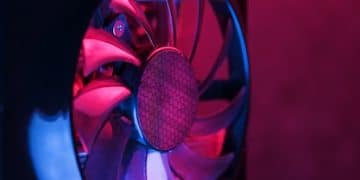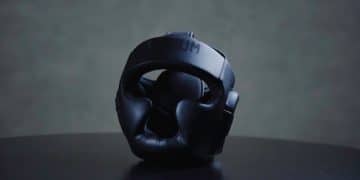Extend Your PC’s Life: Essential Gaming Hardware Maintenance Tips

Maintaining your gaming PC’s hardware through regular cleaning, software optimization, and component checks is crucial to extend its lifespan, ensure peak performance, and prevent costly premature failures stemming from overheating and system inefficiencies.
For any dedicated gamer, a high-performing PC is more than just a piece of equipment; it’s a gateway to immersive virtual worlds. Protecting that investment and ensuring its longevity through meticulous care is paramount. This article explores Extend Your PC’s Life: Essential Maintenance Tips for Gaming Hardware, providing actionable advice to keep your rig running flawlessly for years to come.
Understanding the Lifespan of Gaming PC Components
The components within your gaming PC are engineered for performance, but they aren’t immortal. Each part has an expected lifespan, which can be significantly impacted by usage patterns, environmental conditions, and crucially, maintenance practices. Understanding these factors is the first step toward proactive care.
Heat is arguably the greatest enemy of PC components. Prolonged exposure to high temperatures accelerates degradation, leading to reduced performance and eventual failure. This is particularly true for high-stress components like the CPU and GPU, which generate substantial heat during intense gaming sessions. Effective cooling strategies and regular cleaning are vital to mitigate this. Power supplies, storage drives (both HDDs and SSDs), and even RAM modules also have finite lifespans, influenced by consistent power delivery and read/write cycles, respectively.
Factors Influencing Component Longevity
Several variables contribute to how long your PC’s hardware will last. Beyond inherent manufacturing quality, these factors are largely within your control through diligent maintenance.
- Thermal Management: Inadequate cooling leads to component stress and shortened lifespans.
- Dust Accumulation: Dust acts as an insulator, trapping heat and impeding airflow.
- Power Supply Stability: Fluctuations or insufficient power can strain components.
- Usage Habits: Consistent maximum load without proper cooling can accelerate wear.
Recognizing these influences allows gamers to adopt preventive measures. For instance, an unstable power supply might stress all connected components, while excessive dust accumulation specifically clogs fans and heatsinks, leading to higher operating temperatures. Even how aggressively you overclock your hardware can impact its long-term stability and lifespan.
Ultimately, extending the life of your gaming PC components isn’t about magical fixes, but rather a consistent commitment to best practices. By understanding what stresses your hardware, you can implement targeted maintenance routines that significantly boost durability.
The Critical Role of Regular Cleaning and Dust Management
Dust accumulation is an insidious enemy of PC performance and longevity. It clogs cooling vents, settles on circuit boards, and suffocates heatsinks, acting as an insulating layer that traps heat. This elevated temperature, in turn, hastens the degradation of sensitive electronic components. Regular physical cleaning is not merely cosmetic; it is a fundamental aspect of hardware maintenance.
Over time, dust, pet hair, and other debris found in typical home environments will invariably find their way inside your PC case. This grime forms insulating blankets on heatsinks and fan blades, severely impeding their ability to dissipate heat. When components run hotter than their optimal operating temperatures, they perform less efficiently, leading to thermal throttling, reduced frame rates, and eventually, premature hardware failure.
Essential Cleaning Tools and Techniques
To effectively clean your gaming PC, you’ll need a few specialized tools. Prevention is key, but once dust has settled, proper removal is crucial. Always disconnect your PC from power before beginning any internal cleaning.
- Compressed Air: Ideal for blowing dust out of tight spaces, fan blades, and heatsinks. Use in short bursts and hold fan blades stationary to prevent over-spinning.
- Microfiber Cloths: Excellent for wiping down surfaces and larger components without leaving lint.
- Isopropyl Alcohol (90%+): Great for cleaning thermal paste residue or stubborn grime on surfaces, applied with a cotton swab or cloth.
- Small Brushes/Cotton Swabs: Useful for reaching intricate areas on circuit boards or around ports.
Start by removing the side panels of your PC case. Use compressed air to blow out dust from all fans (CPU cooler, GPU fans, case fans) and heatsinks. Pay particular attention to the power supply unit, as it often becomes a dust magnet. For stubborn dust on component surfaces, a soft brush or microfiber cloth lightly dampened with isopropyl alcohol can be effective. Never spray cleaning solutions directly onto components.
Regularity is key; a light dusting every 3-6 months can prevent significant buildup. Consider the air quality of your room; if you have pets or a dusty environment, more frequent cleaning might be necessary. This simple yet critical practice ensures that your cooling system can perform optimally, directly contributing to extending the lifespan of your valuable gaming hardware.

Optimizing Cooling Systems for Peak Performance
Effective cooling is the linchpin of a long-lasting and high-performing gaming PC. Overheating is the leading cause of component degradation and performance throttling. Therefore, meticulously optimizing your cooling system is not just a recommendation but a necessity to safeguard your hardware investment.
A gaming PC inherently generates significant heat, especially under load. CPUs and GPUs, the powerhouses of any gaming rig, produce the most heat. If this heat isn’t efficiently removed from the system, it accumulates, causing components to operate beyond their safe temperature limits. This results in “thermal throttling,” where the components automatically reduce their clock speeds to prevent damage, leading to noticeable drops in frame rates and overall system sluggishness. Chronic exposure to high temperatures can permanently damage chips and circuits, significantly shortening the lifespan of your hardware.
Advanced Cooling Strategies
Beyond basic cleaning, several advanced strategies can enhance your PC’s cooling efficiency. These range from strategic fan placement to more sophisticated cooling solutions.
- Case Airflow Configuration: Ensure a balanced positive or negative pressure setup. Positive pressure (more intake than exhaust) can reduce dust ingress, while negative pressure (more exhaust) might evacuate heat more quickly but can draw in more dust.
- Upgrading CPU Cooler: Stock coolers are often adequate but can be insufficient for demanding gaming or overclocking. Aftermarket air coolers or AIO (All-In-One) liquid coolers offer superior heat dissipation.
- Optimizing Thermal Paste: Over time, thermal paste on the CPU and GPU (if you’re comfortable with GPU disassembly) can dry out. Replacing old, hardened thermal paste with a fresh, high-quality compound can significantly improve heat transfer to the heatsink.
- Cable Management: Neatly routed cables inside the case improve airflow, allowing cool air to reach components more effectively.
Investing in higher quality case fans or even upgrading to a custom water-cooling loop are options for those seeking ultimate thermal performance, though they require more technical expertise. Software monitoring tools, like MSI Afterburner or HWMonitor, are invaluable for tracking component temperatures in real-time. Regularly checking these temperatures, especially during intensive gaming, allows you to identify potential overheating issues before they become critical. Proactive cooling optimization directly translates to a more stable, higher-performing, and longer-living gaming PC.
Software Maintenance: Beyond the Hardware
While physical cleaning and cooling are vital for hardware longevity, software maintenance plays an equally critical, though often overlooked, role. A well-optimized operating system and clean software environment reduce system strain, prevent conflicts, and ensure your hardware can perform at its intended efficiency without unnecessary burdens.
An accumulation of unnecessary background processes, outdated drivers, fragmented hard drives, and malware can collectively bog down your system. This software bloat forces your hardware to work harder to achieve simple tasks, leading to increased power consumption, higher temperatures, and a generally sluggish user experience. What might appear as a hardware limitation could often be resolved through diligent software upkeep.
Key Software Optimization Practices
Regular software maintenance involves a multi-pronged approach, focusing on cleanliness, efficiency, and security. These practices contribute directly to reduced hardware strain and improved longevity.
- Driver Updates: Keep your graphics drivers (NVIDIA, AMD) and chipset drivers up-to-date. Newer drivers often include performance optimizations, bug fixes, and better compatibility, which can directly improve how your hardware operates with various games and applications.
- Operating System Updates: Regularly update Windows (or your OS of choice). These updates frequently contain security patches and performance enhancements that make your system more efficient and resilient.
- Disk Cleanup and Defragmentation: Regularly run Disk Cleanup to remove temporary files and system clutter. For traditional HDDs, defragmentation (though less critical for SSDs due to their different operating principles) ensures data is stored contiguously, improving access times.
- Malware and Virus Scans: Use reputable antivirus software and run regular scans. Malware can consume system resources, leading to performance drops and potential data corruption.
Beyond these, consider uninstalling unused programs, managing startup applications to reduce boot times and background resource consumption, and regularly backing up important data. For gamers specifically, game files can become corrupted over time; utilizing game client “verify integrity” features can prevent issues. Implementing these software maintenance habits ensures your hardware operates in an efficient, streamlined environment, reducing unnecessary wear and tear and maximizing its functional lifespan.
Power Supply and Cable Management: The Unsung Heroes
Often underestimated, the power supply unit (PSU) and meticulous cable management are crucial elements for your gaming PC’s health and longevity. The PSU is the heart that pumps electricity to all components, while proper cable routing ensures unobstructed airflow, both directly impacting performance and thermal efficiency.
An unreliable or underpowered PSU can send unstable voltage to your components, leading to system crashes, hardware malfunctions, and accelerated component degradation. It’s not just about providing enough wattage; it’s about delivering clean, consistent power. Likewise, a mess of tangled cables within the PC case creates significant roadblocks for airflow, causing hot air to pool around components and negating the efforts of even the best cooling fans.
Best Practices for Power and Cables
Optimizing your PSU and cable management starts with thoughtful selection and careful installation. These practices yield tangible benefits in system stability and hardware lifespan.
- PSU Quality and Wattage: Always invest in a reputable brand’s PSU with a good efficiency rating (e.g., 80 PLUS Bronze or higher). Ensure its wattage meets or slightly exceeds your system’s total power requirements, providing headroom for future upgrades and transient power spikes.
- Dedicated Power Lines: Whenever possible, use separate PCIe power cables for your graphics card if it has multiple power connectors. This ensures each connector receives stable power directly from the PSU, rather than splitting one cable, which can lead to instability under load.
- Rout Cable Neatly: Use the cable management features of your PC case (routing holes, tie-down points) to tuck cables behind the motherboard tray. This keeps them out of the main airflow path.
- Utilize Cable Ties/Velcro Straps: Secure bundles of cables using zip ties or reusable Velcro straps. This not only improves aesthetics but prevents cables from sagging into fan blades or obstructing vents.
A well-chosen PSU provides a stable foundation for your hardware, preventing undue stress from power fluctuations. Simultaneously, superior cable management ensures that your PC’s cooling system can operate at peak efficiency by allowing unrestricted airflow throughout the case. These often-overlooked details are fundamental to preserving your gaming PC’s long-term health and performance, contributing significantly to its extended lifespan.
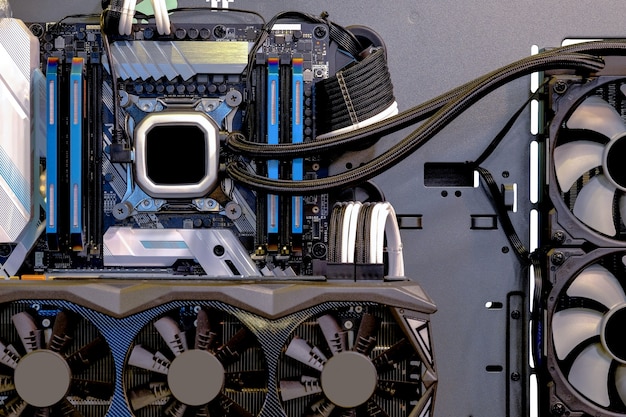
Monitoring and Diagnostics: Your PC’s Health Checkup
Proactive monitoring and diagnostic checks are indispensable tools in extending your gaming PC’s life. Just as a car owner monitors engine lights and fluid levels, a PC owner should regularly check component temperatures, disk health, and system stability. Early detection of anomalies can prevent minor issues from escalating into costly hardware failures.
Ignoring warning signs from your PC can be detrimental. Subtle changes in fan noise, unexpected performance drops, or intermittent crashes are often indicators of underlying issues. These could range from overheating components to failing storage drives or even an unreliable power supply. Without proper monitoring, these early symptoms go unnoticed, allowing problems to worsen until a critical failure occurs, leading to downtime and potentially expensive replacements.
Essential Monitoring Tools and Practices
Several software tools are available that provide valuable insights into your PC’s health. Integrating these into your routine can save you headaches and money down the line.
- Temperature Monitoring Software: Programs like HWMonitor, Core Temp, or MSI Afterburner allow you to track CPU, GPU, and other component temperatures in real-time. Knowing your idle and load temperatures helps identify adequate cooling.
- Storage Health Monitoring: Tools such as CrystalDiskInfo provide S.M.A.R.T. (Self-Monitoring, Analysis and Reporting Technology) data for your hard drives and SSDs. This data can indicate impending drive failure, allowing you to back up data before it’s too late.
- RAM Diagnostics: Use Windows Memory Diagnostic or MemTest86 to check for errors in your RAM modules. Faulty RAM can cause system instability and crashes.
- Stress Testing: Occasionally, running brief stress tests (e.g., Prime95 for CPU, FurMark for GPU) can help identify stability issues under maximum load and verify your cooling system’s efficacy. Use with caution and monitor temperatures closely.
Beyond these specific tools, pay attention to unusual noises from your PC, such as excessively loud fans or clicking sounds from an HDD. Regularly review Windows Event Viewer for critical errors. By embracing a routine of diligent monitoring and diagnostic checks, you empower yourself to address potential issues promptly, directly contributing to the long-term reliability and extended lifespan of your gaming hardware, ensuring many more hours of uninterrupted gaming enjoyment.
Upgrade Smart: Future-Proofing for Longevity
While maintenance extends the life of existing components, smart upgrading can also play a crucial role in the longevity of your overall gaming PC experience. Instead of waiting for a total system overhaul, strategic, targeted upgrades can breathe new life into an aging rig, ensuring it remains viable and enjoyable for future gaming titles.
The “future-proofing” concept in PC building isn’t about buying the absolute top-tier hardware that will surely outlast everything. It’s more about making upgrades that incrementally boost performance where it’s needed most, rather than letting the entire system become obsolete. For instance, a CPU that struggles with specific tasks while other components are still adequate might prompt an upgrade of just the CPU and motherboard, rather than an entirely new build, thus postponing the need for a complete system replacement.
Strategic Upgrade Considerations
Approaching upgrades strategically means identifying bottlenecks and choosing components that offer the best performance-per-dollar improvement for your specific use case. This avoids unnecessary spending and ensures your money is well-invested.
- Storage Upgrade (SSD): If you’re still using an HDD for your operating system and games, upgrading to an SSD (SATA or NVMe) offers the most dramatic improvement in general system responsiveness and game load times. This simple upgrade makes an older system feel significantly faster.
- More RAM: For many modern games and multitasking, 16GB of RAM is generally the sweet spot. If you have 8GB or less, upgrading to 16GB can smooth out performance and prevent stuttering.
- GPU Upgrade: The graphics card is usually the most impactful upgrade for gaming performance. However, ensure your CPU and PSU can adequately support a new, more powerful GPU to avoid creating new bottlenecks.
- CPU/Motherboard/RAM Combo Upgrade: For older systems, sometimes the CPU becomes the primary bottleneck. In such cases, these three components often need to be upgraded together due to changing socket types (CPU) and RAM generations (DDR4 to DDR5). This is a more significant investment but can provide a substantial leap in overall system capability.
By focusing on smart upgrades, you avoid the “throwaway” culture of replacing an entire system when only a part of it is holding you back. This approach not only saves money but also ensures that compatible, still-functional components continue their useful life, effectively extending the economic and functional longevity of your gaming PC.
| Key Maintenance Area | Brief Description |
|---|---|
| 🧼 Cleaning & Dust Management | Regularly remove dust from fans, heatsinks, and vents to prevent overheating and component degradation, using compressed air and microfiber cloths. |
| 🧊 Cooling System Optimization | Ensure optimal airflow, check thermal paste, and consider upgrading CPU coolers for stable temperatures and enhanced performance longevity. |
| ⚙️ Software Maintenance | Keep drivers and OS updated, perform disk cleanups, and run malware scans to reduce system strain and avoid hardware overwork. |
| 🩺 Monitoring & Diagnostics | Utilize software tools to monitor temperatures, storage health, and RAM integrity, allowing for early detection and prevention of issues. |
Frequently Asked Questions
▼
Ideally, a thorough internal cleaning with compressed air should be performed every 3 to 6 months, depending on your environment. If you have pets or live in a dusty area, more frequent cleaning (e.g., quarterly) might be necessary to prevent significant dust buildup and maintain airflow.
▼
Yes, indirectly. Software issues like driver conflicts, excessive background processes, or malware can force hardware to work harder and generate more heat. This increased strain and temperature can accelerate the degradation of components, thereby shortening their effective lifespan.
▼
It’s not usually necessary for new builds for several years. However, if your CPU temperatures are consistently high despite proper cleaning, repasting the CPU (and GPU if you’re comfortable) every 2-3 years, or when reinstalling a cooler, can significantly improve thermal conductivity and cooling performance.
▼
A reliable PSU with sufficient wattage and an 80 PLUS efficiency rating ensures stable and clean power delivery, reducing strain on components. An unstable PSU can lead to voltage fluctuations that stress and damage hardware over time. Always avoid using cheap, generic PSUs.
▼
You can use free monitoring software like HWMonitor, Core Temp (for CPU), or MSI Afterburner (for GPU) to check temperatures in real-time. Normal idle temperatures are typically 30-50°C, while under load during gaming, they should ideally remain below 80-85°C.
Conclusion
Extending the life of your gaming PC is not about magic, but rather a methodical approach to care and optimization. By embracing consistent practices such as regular physical cleaning, meticulous cooling system optimization, diligent software maintenance, and proactive hardware monitoring, you can significantly prolong the operational lifespan of your valuable gaming hardware. These habits not only prevent premature failure but ensure your rig continues to deliver peak performance, allowing you to enjoy countless more hours of immersive and uninterrupted gaming experiences.
